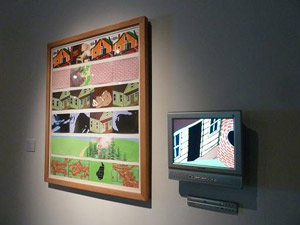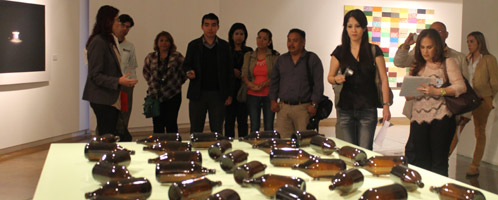
An exhibition that reflects on the mobility as a knowledge generation process is going to be open to the public through April 14 at Tamaulipas’ Museum of Contemporary Art. Desplazamientos: arte contemporaneo en la coleccion FEMSA is made up of forty-two artworks created by thirty-four Mexican artists such as Gabriel Orozco, as well as creators from other latitudes that play leading roles in the contemporary stage of that country –Brazilian Leda Catunda is a fine example.
Human condition, memory, physical or psychological movement, the fragmentation of contemporary experience, these are some of the matters tackled by the artists on this list. The exhibition is divided into three theme cores that try to guide viewers on a wider approach to the conceptual idea.
El desplazamiento desde el territorio fisico y la concepcion del lugar –Movement from the physical territory and site conception–, the first core, includes pieces such as La historia del rostro, by Eugenio Dittborn, belongs to a series that traveled from Chile as folded boxes within an envelope and were later exhibited as paintings. El lugar como pretexto –The place as pretext –includes abstract images that speak of museums conceived as culture creating spaces and question what the fate of these premises’ heritage would be if any natural disaster or war is unleashed. A third core, titled Desplazamiento simbolico –Symbolic movement -, shows among other works a video that refers to the movement through 500 pictures taken from different places of Mexico City. An important element within this third section is the participation of Mexican artist Rafael Lozano-Hemmer with his famous Caguamas sinapticas, a series of bottles placed on a table, and the movement is controlled by a computer.
Source: http://www.laverdad.com.mx











